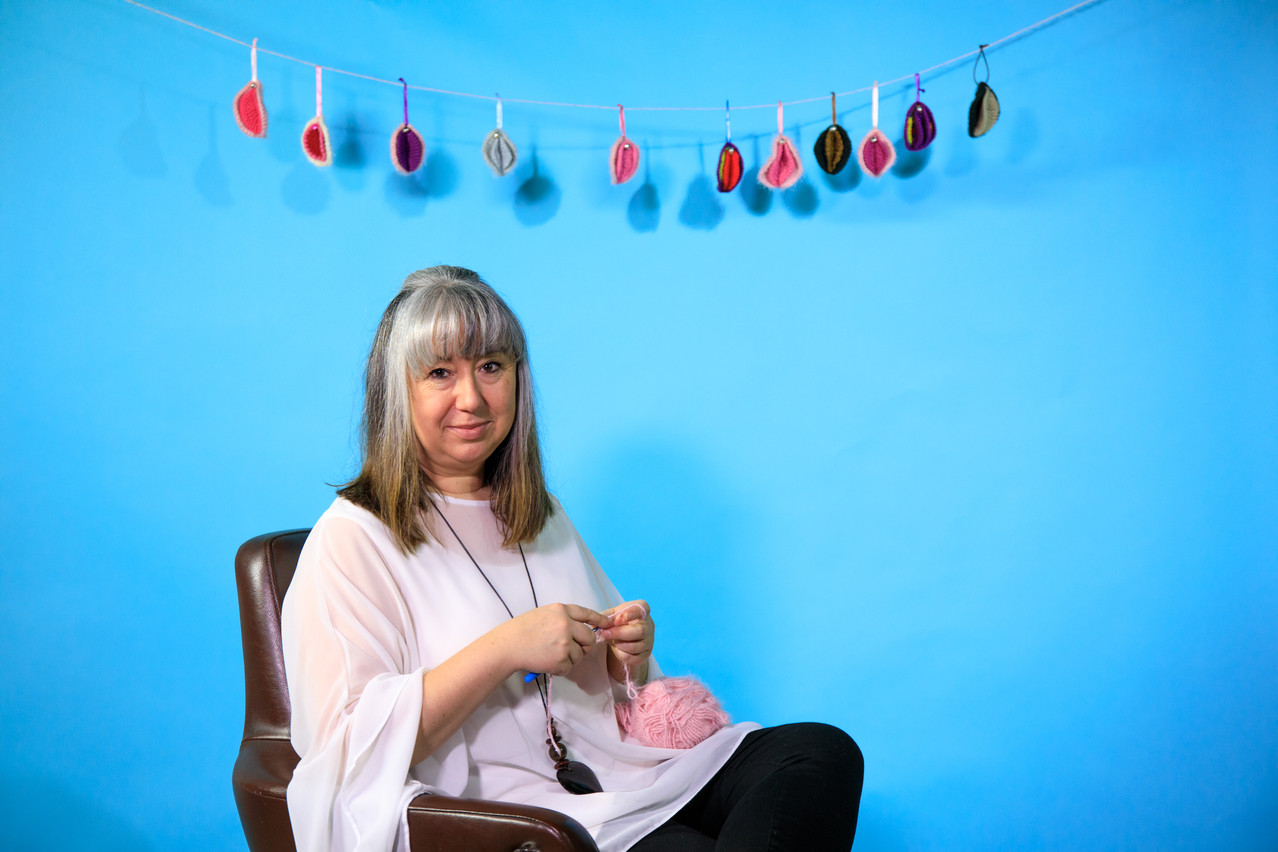She had in part been inspired by a photo her cousin had posted on Instagram, where she had put a paper version in her window as a Christmas decoration.
Neel, originally from Denmark, had also been aware of a Nana campaign, dubbed “Viva la Vulva”, which had sparked outrage in France, deemed by many as inappropriate because of its symbolic images of the female anatomy. “People were getting really worked up, saying it was degrading to women,” Neel told Delano. “It irritates me that there’s still so much taboo around it.”
In no way, she says, should people be offended by a symbolic vulva. “If you’d ask people to draw a penis, [anyone] could do it because you see them everywhere. If you ask them to draw a vulva, not many people can, including women.”
The topic made headlines again this year, after Goop sold a candle with the special name “This Smells Like My Vagina”. Some slammed Goop founder and actress Gwyneth Paltrow for going too far--although Paltrow herself has said, “It started out as a funny joke”--while others called it a mere PR move, especially as it was timed around the launch of her Netflix series, "The Goop Lab". Nevertheless, the first candle sold out (despite the price tag of $75) and has since been restocked.
Neel has been a bit wary of some of Goop’s products, saying some could even be harmful to women, but she agrees there is a lack of education about the female anatomy. “When you ask people to talk about their parts, in English language most people would say vagina and mean the vulva, when in fact the vagina is just the canal. If you look at the different languages and what people call it, it often has to do with shame, not saying the real word.”
As she launched her site, Neel did her homework: she was in touch with Jamie McCartney, an English artist, who aims to change female body image through art. Among his projects: “The Great Wall of Vagina”, which included casts of the female anatomy of 400 different women. “Many women who see his work thank him afterwards because it helps them come to terms with their insecurities.”
As might be expected there have been mixed reactions about Neel’s handmade creations, too: she says some recipients don’t want to discuss anything about it, but in general “people are quite positive...there’s also the feminist aspect of empowerment.”
Ultimately, however, Neel hopes the crocheted vulvas will spark dialogue. Recently her best friend took a few dozen to the Democratic Republic of Congo. “She gave them to two men at a dinner party and filmed their reaction. It was really interesting because they were actually really happy about them, sitting with them the whole evening.”
That same friend--who was in Goma, where the UN and other humanitarian organisations are quite active--gave it to others in hopes that the Vulvastic model could be adapted to reflect the various outcomes of female genital mutilation, possibly to be used as teaching tools. More than 200 million females alive today have been cut as a result of the practice, according to the World Health Organization. Sometimes that’s due to customs according to “tradition”, other times in the context of sexual violence during wartime.
For Neel, who’s also a life and communication coach at Life Catcher (website soon to launch), conversations around such topics are important. She’s also concerned about the rising popularity of labiaplasty, a reconstructive procedure which is sometimes performed to correct functional impairment or discomfort, other times for aesthetics. According to the American Society of Plastic Surgeons, 12,666 labiaplasty procedures were carried out in 2016—a 39% increase from the year before.
“Women’s magazines are saying you don’t need it, but explain how you can do it, give the costs,” Neel says. “They call it a ‘designer vagina’--which is actually even the wrong word…there are even teenage girls wanting to do that.”
As for the design itself, Neel doesn’t work from a pattern: she simply crochets two parts--in a wide range of colours and yarns, celebrating diversity--sews them together and adds a bell or bead.
“They’re not perfect, because I’m not a crochet wiz. They’re really symbolic, but they’re perfect and unique every time because they’re all different.”
